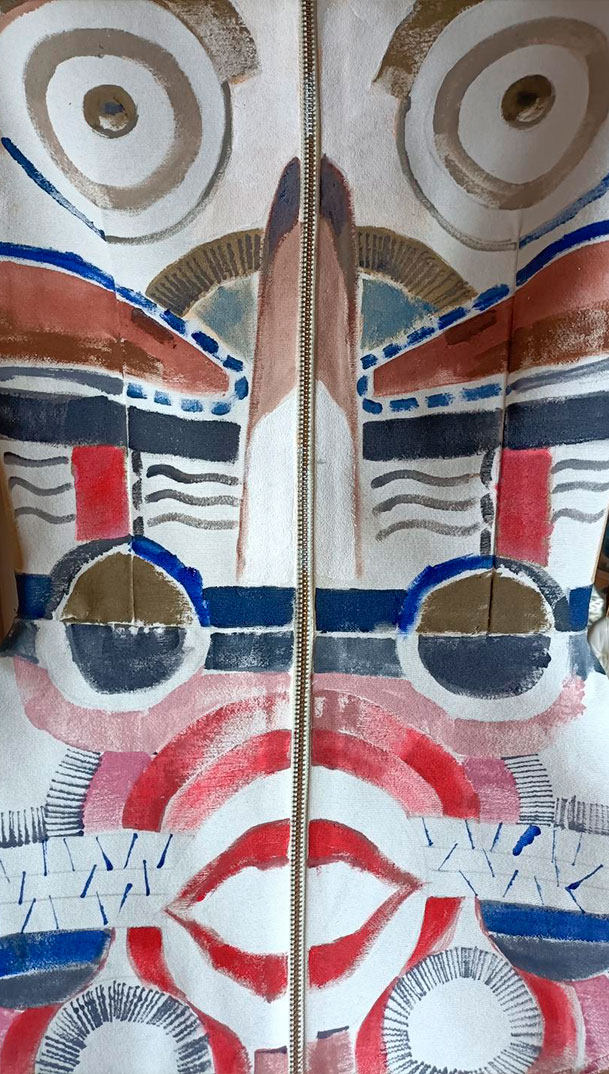FASHION ARTSPORT
DAVID
SANCHO

THE WORK
David Sancho, plastic artist and artistic painter; Antequera (Malaga) 1966, began to paint at the age of 8 years and to exhibit at 13, graduated in Fine Arts from the University of Seville, scholarship from the Erasmus Foundation, UMA, Lopez Villaseñor Museum, Government of Castilla-La Mancha among other institutions. Invited by the Spanish Academy in Rome, artistic residencies in Germany, Spain, Holland, France, Bulgaria, Croatia, Morocco, etc. He has had more than 35 individual exhibitions both in Spain and abroad and more than 120 group exhibitions.
His works are full of the Mediterranean light that he captures in a singular way, half figurative, half abstract, where the color reaches its maximum vigor with the strength of his brushstrokes. He has participated in numerous solo and group exhibitions, inside and outside Spain, and has received numerous awards. His work, as he himself defines it, “is the result of a process of observation, filtration and internalization. A painting is like a journey. You have the intention to give life or to tell something. But, in the end, you don’t know how you will finish it”.
I titled the costume as “The Priestess”: it was the first idea I had when I saw the costume in a fully assembled photo and then in live performance.
The australian aborigines are, along with the Torres Strait Islanders, the descendants of the first inhabitants of Australia and its adjacent islands. The traditional territory of the Australian Aborigines extends throughout Australia, Tasmania and some nearby islands.
The aboriginal culture developed in an autarchic way, giving rise to a great variety of languages and cultures with common features, and is the oldest living culture on the planet. The aborigines led a hunter-gatherer life, and lived in semi-nomadic groups that roamed vast territories hunting with spears and boomerangs, fishing in canoes and gathering fruits and plants. As they had no written language, they transmitted their knowledge through stories and songs.
Aboriginal painting is an art of millenary tradition. The motifs represented usually relate the legends of the “Dreamtime”, which is why it has sometimes been assimilated to a form of writing. It is mostly done on rocks, bark and fabrics. With the exception of cave paintings, it was traditionally an ephemeral art: drawings in the sand and body painting.
The aboriginal painter Albert Namatjira (28 June 1902-8 August 1959) is one of the most renowned Australian painters. His watercolor style inspired the Hermannsburg School of Aboriginal art.
After learning about the Australian Aborigines and their aesthetics, I could see the great symbolism of their tattoos and body paintings, calligraphy…etc. I made some pencil sketches to then take them to the suit.
I opted for a basic but forceful palette, as are reds, blues, grays and browns, I adopted the circular shapes of his calligraphy, ending in arrowheads, eyes, animals, such as the kangaroo and Koala, as a reminiscence and wink to those lands. The line is “rough and irregular”, like something badly painted … to emulate the way of painting of the Aborigines that I suppose it would be with the fingers, there is also a composition on the back of the suit that may recall the art-deco, a type of architecture and ornamentation that I have assumed will exist in Australia for its European influence of the twentieth century.
The costume is composed of three pieces, a bodice, a front with a certain “flamenco air” and a cape as an attire of important or influential personage. The front of the costume is simpler in terms of decoration, the front strip may allude to the Andalusian flamenco costume and the back, has more weight in terms of symbolism. It has eyes, mouths, ears …. all a reference to the animal and aboriginal forms.
TITLE
THE PRIESTESS
TECHNIQUE
Acrylic and pencil on cotton.
INSPIRATION
Australian aborigines.
LINKS

CONTINENTES
- AMÉRICA DEL SUR
- ASIA
- ÁFRICA
- EUROPA
- AMÉRICA DEL NORTE
- OCEANÍA
